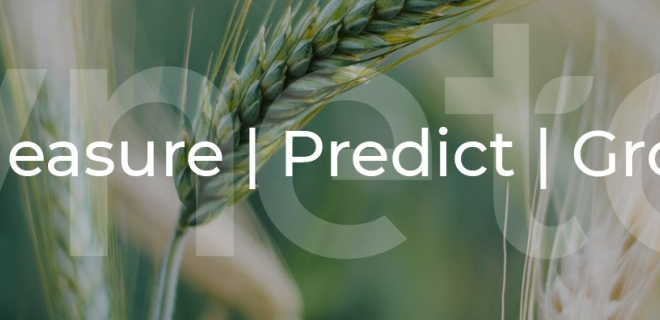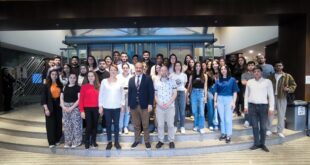We meet Dr Nomman Ahmed, Executive Director of Global Practice Advanced Analytics & sigma at Kynetec, and speak to him about his specialist subject: predictive intelligence.
1. Let’s start at the beginning. What is Predictive Intelligence in plain English?
Intelligence is best described as the ability to accumulate knowledge, to understand it and then apply it for answering questions and solving problems. This is a continuous process, and means we get to expand and recalibrate our knowledge and navigate manifold situations.
When intelligence is used for understanding likely future questions, problems, and situations, and to find answers and solutions to the same, we refer to it as predictive intelligence . Essentially, it is existing intelligence (accumulated and tested for what’s worked and what hasn’t) applied to future scenarios.

2. The weather has a huge impact on input demand at a farm level. How can predictive intelligence help agribusiness get ahead of this demand, accurately?
Weather is a short-term occurrence, whereas climate is a longer-term phenomenon. Depending on the time horizon we seek for our predictions of input demand (e.g. for crop protection and seed) we choose one or the other to understand input demand. Short-term predictions would have to make use of high frequency in-season datapoints, compared over a shorter period, ultimately also allowing for climate understanding. Longer-term projections would need to be modelled around long-term climate normals and deviations from the same.
In terms of how we predict this, well, there are a number of steps. Biophysical properties of the whole crop system need to be taken into account for each plant species in order to be able to create accurate models of crop behaviour to environmental properties and stressors. For instance, every plant’s root system has a different accessibility to soil available water- meaning this particular difference needs to be accounted for in any model. The same is true for extreme weather patterns, and best crop choices for likely climatic conditions in future settings, where adaptation to climate change becomes a necessity than an option to growers.
Relationships between crop inputs and environmental fundamentals such as weather are not linear, and on the contrary, many crops have very different responses to changes in key metrics such as precipitation and temperature, and not to mention pest and disease pressure.

Also, we cannot simply model temperature and crop chemical demand. First, we must model the direct impacts of weather on the crops and the inputs, before we can create understandings of how both crop response and input response are connected. Done right, these advanced predictive analytics-based models are capable of accurately predicting likely input demand given certain environmental conditions, today and in the future.
On farm, grower preference will be very different for each product type and chemical class of inputs. This is where we bring in additional predictive models, which are built on behavioural understanding of farmers.
From all of this data, layers on layers of modelling, Kynetec can predict market outcomes at the most granular level, such as active ingredients and brands.
3. What are the key trends in the sector that will cause disruption for agribusinesses?
There are many trends that can be disruptive for the agribusiness sector, however as far as predictive intelligence and analytics are concerned, Precision Agriculture and IoT (Internet of Things) Integration are the most notable.

A lot of real-time information and data on e.g. soil health, weather, crop conditions, pest development and yield performance is being collected using these technologies. Predictive analytics then uses real-time data to optimize the understanding of the industry’s customers, and it can also help growers to improve resource use, crop yields, and overall farm efficiency. This elevates the farmer – the end user – from a gut-feel and experience-based decision maker to a data-informed one, with many prescriptions at hand to best suit local conditions.
So in theory, the best product, the best solution, the best seed variety and the highest efficacy crop chemical – irrespective of brand – could be known to the growers. The industry will need to leverage this by delivering ″superior level″ service and investing in breakthrough solutions for growers. It will change the existing business models for the industry, but create more competition for better R&D, ultimately benefiting innovation and agriculture as a whole.
Predictive Analytics, such as Kynetec’s AgMeta or Interlytics, can also be applied to optimize the input supply chain. By forecasting demand for pesticides, and other inputs, businesses can streamline inventory management, reduce waste, and improve overall supply chain efficiency.
The disruptive element is the way all this is done and at what pace, will change. Businesses need to be prepared to alter the way they make decisions, and how they talk to the farmer. Growers embracing precision agriculture will benefit from practical, predictive insight, unique to their farm, while key for the wider industry is to realize that collaborative data efforts are a key stepping stone for more comprehensive and accurate predictive intelligence for decision-making.
4. What data sources are used in Kynetec’s predictive intelligence?
Besides our core primary data sources, which have been around for 30+ years, FarmTrak (Farm level hyper-local input-use data) and Sigma (National level macro input-use data) we are using some of our Retail Tracking datasets and 50+ secondary data sources to feed our analytics framework.

These datasets cover farm microeconomics, macroeconomics, ag-policy metrics, regulatory insights, biophysical conditions, behavioural trends and demographics at grower level. Our datasets at hyper-local level provide us with the ability to geo-code each farm and link a plethora of datapoints to that individual farm. By doing this, we can uncover past behaviour in different conditions, feed machine learning algorithms and generate accurate forward-looking intelligence for the ag input industry, uncovering the ″Why?″ as well as the ″So What?″.
5. Can you share a practical example of how predictive intelligence can support business success?
Of course. Imagine a year – say 2022 – what if using our predictive intelligence solutions, the crop protection industry could’ve anticipated some of the expected market fluctuations for 2023 in time, and reacted accordingly so they could optimize their supply chains.
By using a forecasting tool to analyse historical data and identify patterns, and help anticipate the downward market trend, CP brands could have been more proactive in their decision-making, such as adjusting production levels, inventory management, and marketing strategies to align with expected reduction in demand.
Combined with predictive intelligence, a business could also identify potential risks and uncertainties. Through subsequent scenario planning, organizations could have developed contingency plans, minimizing the impact of unexpected events on operations and revenue. Not saying that our projections could’ve predicted all of the billions of inventory sitting in the channel, however, predictive intelligence would have clearly shown the expected dip in some key markets’ fundamentals around price and volumes by crop and country, also highlighting the key drivers for that expected outcome. This would have allowed the industry to react ahead of time.

By Dr. Nomman Ahmed,
Executive Director, Global Practice Advanced Analytics & sigma
Source: Kynetec
 THE GLOBAL WINDOW OF TURKISH FOOD AND AGRICULTURE The Global Window of Turkish Food and Agriculture Sector
THE GLOBAL WINDOW OF TURKISH FOOD AND AGRICULTURE The Global Window of Turkish Food and Agriculture Sector









